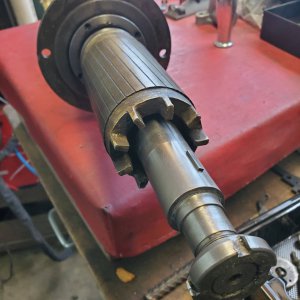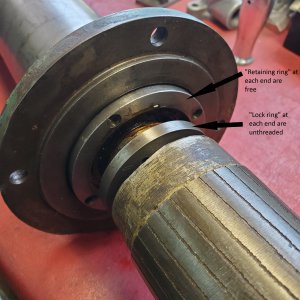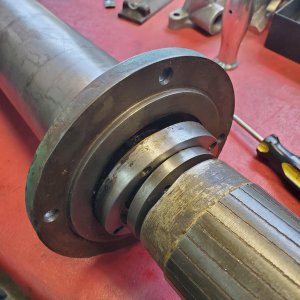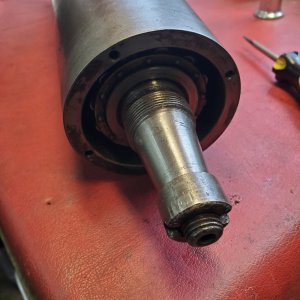Indeed, all
good input. Thank you.
I have little cash in this machine as it is, and it is in decent shape, overall. My hope has been to disassemble the spindle, clean it up, strip and repaint (the entire machine), evaluate bearing and spindle condition and, if necessary, bearing replacement cost. Dealing with custom ground bearings and spacers certainly adds a significant level of difficulty since there doesn't seem to be any printed material available to provide specifications (grease type and amount, preload, bearing numbers and assembly order, etc.).
If I get this thing apart, I will have to use its current build condition as guidance, not knowing if it is correct or not. At this point, that all just adds to the discovery. I'd like to say fun, but as
@Richard King 2 suggested, if I end up having to buy two sets of bearings, that would most likely kill that joy.
A tiny sidebar...When I was 10, my mother bought me a used minibike. It wouldn't start. I knew nothing about engines and neither did my father. One night a friend of his came over and asked me if I had gotten the minibike running. When I said I hadn't he asked if I had taken apart the carburetor yet. With wide-eyed fear(?) I said no. His reply literally changed my life. He asked, "Why not?". So I got he minibike running and I've been saying that to myself for the last 50+ years - Why not?
So far I've never not been able to get something back together, and in improved condition.
The other saying that has guided me is "Behold the turtle. He doesn't make any progress unless he sticks his neck out."
So I will continue to push forward. If I end up having to hand it over to a rebuild shop, it will be a game changer - and not in a good way. It was easy to justify to my wife buying this SG for a couple hundred bucks. A couple thousand bucks will require a completely different strategy.
I don't mean to be shutting down this thread, as I would still really appreciate any additional advice or especially anything detailing the exploded assembly. And I will continue to hope that "exploded" remains figurative, and not literal.






